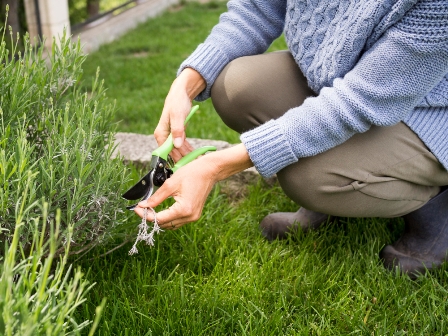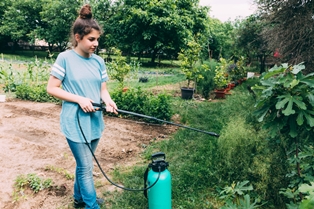A lush, green lawn is the pride of any homeowner, but the intrusion of clover can quickly turn that dream into a frustrating reality. Clover is a stubborn weed that can take over your lawn, creating an eyesore and competing with your grass for nutrients. However, fear not, as there are effective methods to reclaim your lawn and restore its vibrant beauty. In this article, we will unveil the secrets of how to get rid of clover in your lawn.
Understanding Clover:
Before diving into eradication methods, it’s crucial to understand the enemy. Clover thrives in nitrogen-rich soil, and its presence often indicates an imbalance in your lawn’s nutrient levels. Recognizing the type of clover invading your lawn is the first step in developing an effective removal strategy.
Manual Removal:
For a small infestation, manual removal is a viable option. Using a dethatching rake or a hand weeder, carefully pull the clover from the root. Ensure you get the entire root system to prevent regrowth. This method is time-consuming but can be effective for isolated patches.
Adjusting Soil pH:
As mentioned earlier, clover prefers nitrogen-rich soil. By adjusting your lawn’s pH levels, you can create an environment less conducive to clover growth. Conduct a soil test and add lime to raise the pH if it’s too acidic, or sulfur if it’s too alkaline.
Fertilize Strategically:
Balancing your lawn’s nutrient levels is crucial in the fight against clover. Use a high-quality, nitrogen-rich fertilizer to promote grass growth and outcompete clover. However, be cautious not to over-fertilize, as this can lead to other issues and may actually encourage clover growth.
Herbicides:
For more extensive clover infestations, herbicides can be a powerful ally. Selective herbicides designed specifically for clover control can target the weed without harming your grass. Follow the application instructions carefully, and apply during optimal weather conditions for the best results.
Introduce White Clover:
In a surprising twist, introducing a specific type of clover—white clover—can help combat the invasive varieties. White clover is less aggressive and can act as a “cover crop,” preventing other, more invasive clover species from taking over. This method requires careful management, but when done right, it can contribute to a healthier lawn.
FAQs
Here are some FAQs related to How to Get Rid of Clover in Lawn
To eliminate clover without harming your grass, opt for selective herbicides designed specifically for clover control. Look for products containing ingredients like dicamba or triclopyr, which target clover while leaving your grass unharmed. Follow the application instructions carefully, and consider spot-treating affected areas for precise control.
Excessive clover in your lawn can be indicative of nitrogen-rich soil, which may result from imbalances in your lawn care routine. Clover is a nitrogen-fixing plant and tends to thrive in such conditions. Conduct a soil test to assess nutrient levels, and consider adjusting your fertilization practices to create an environment less favorable for clover growth.
The best time to tackle clover in your lawn is during its active growth periods in the spring and early summer. During these periods, clover is more susceptible to herbicides, ensuring more effective control. Be mindful of weather conditions, choosing a day when the forecast predicts dry weather to allow the herbicide to work without rain interference.
There are several effective clover killers available for lawns. Look for herbicides labeled as selective and designed specifically for clover control. Common active ingredients include 2,4-D, dicamba, or triclopyr. Always follow the manufacturer’s recommendations for application rates and timing for optimal results.
To target clover without harming desirable ground cover, opt for selective herbicides that specifically target broadleaf weeds like clover while sparing grasses and other plants. Carefully read product labels and choose herbicides with ingredients that focus on broadleaf weed control. Spot-treating affected areas can also help minimize any potential impact on surrounding ground cover.
Conclusion:
Maintaining a clover-free lawn requires a combination of manual efforts, strategic lawn care practices, and, when necessary, the use of targeted herbicides. By understanding the factors contributing to clover growth and implementing a comprehensive plan, you can reclaim your lawn’s beauty and enjoy a lush, green landscape once again. Remember, consistency is key, so stay vigilant in your efforts to keep clover at bay.






